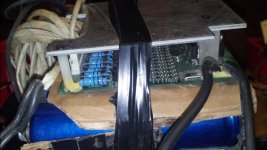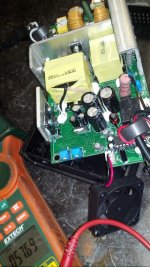bikeelectric
100 W
I have 16 cell Headway 10 ah pack that has been in use about 4 or 5 years and around 8000 or more miles on it. This winter I left it too long sitting and I guess the BMS drained it down to below 2v per cell. I was able to get it charged back up and seemed to work okay , until recently when battery charger failed. I checked pack and found some cells much lower than others so I replaced them with some spare cells.
Yesterday I was charging and heard a pop - and one of the cells I had replaced had gone to .5 volts so I guess that was what the pop was from. I replaced that cell and was charging and checked after awhile and that new cell was up to 4.2 volts so I quickly unplugged charger.
Should the BMS be protecting a single cell against going so high voltage ? Or should I discharge each cell to exact same voltage ( down to 2v ?) and then charge them all up together again ? I have Hobby King Accucell 6 charger to discharge or charge single cells .
Maybe it is time for a new battery pack since I have some mixed ages on the new and old cells.
Thanks for any advice
Yesterday I was charging and heard a pop - and one of the cells I had replaced had gone to .5 volts so I guess that was what the pop was from. I replaced that cell and was charging and checked after awhile and that new cell was up to 4.2 volts so I quickly unplugged charger.
Should the BMS be protecting a single cell against going so high voltage ? Or should I discharge each cell to exact same voltage ( down to 2v ?) and then charge them all up together again ? I have Hobby King Accucell 6 charger to discharge or charge single cells .
Maybe it is time for a new battery pack since I have some mixed ages on the new and old cells.
Thanks for any advice





